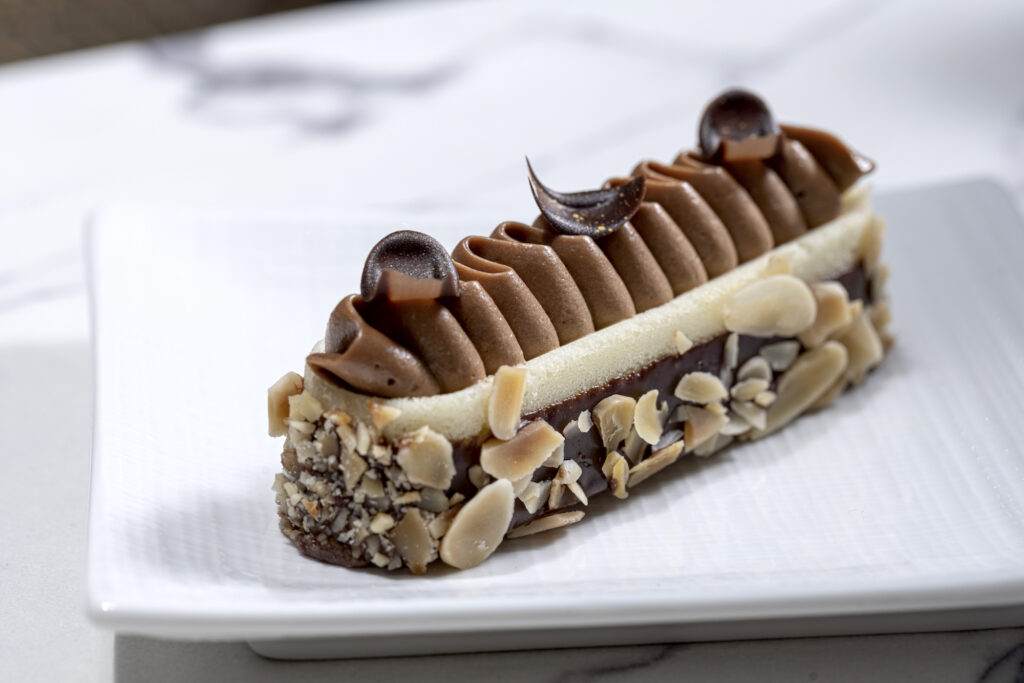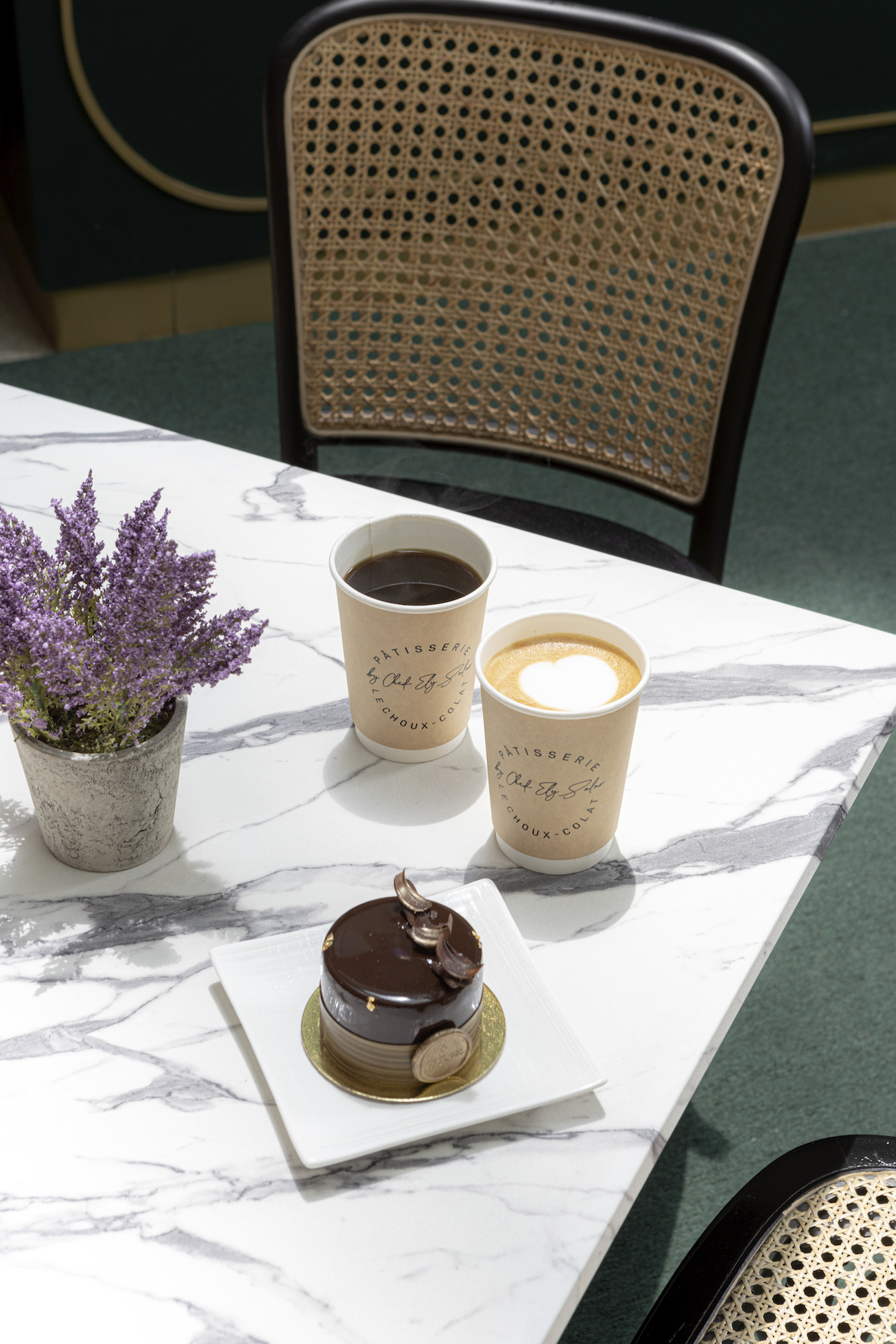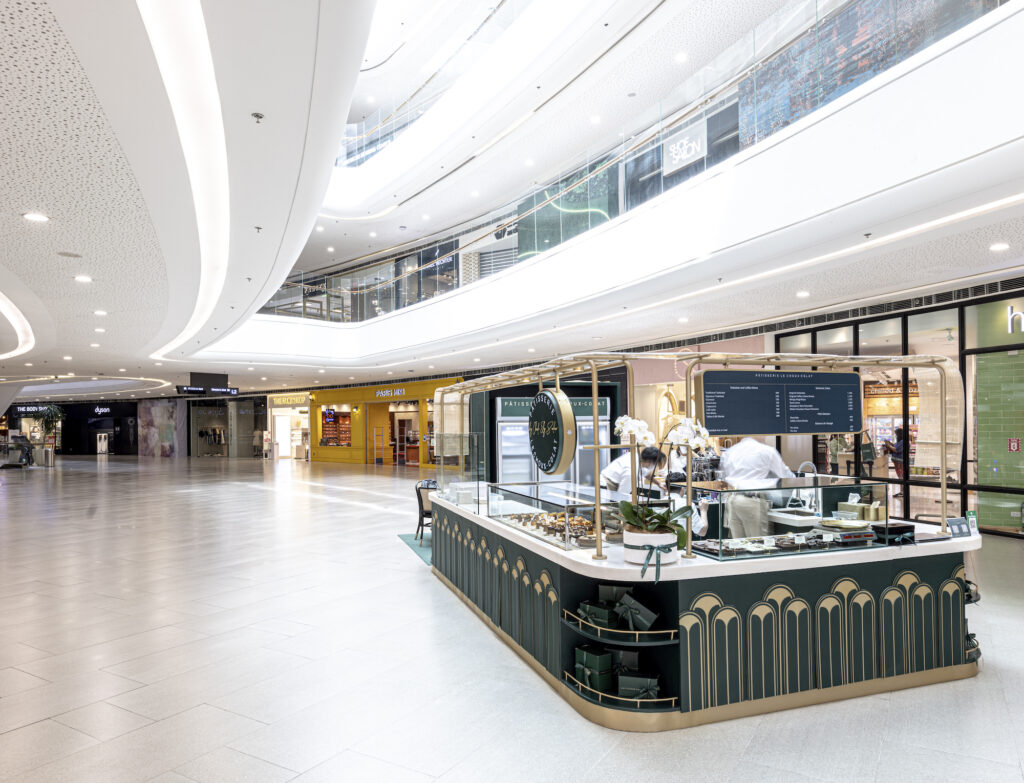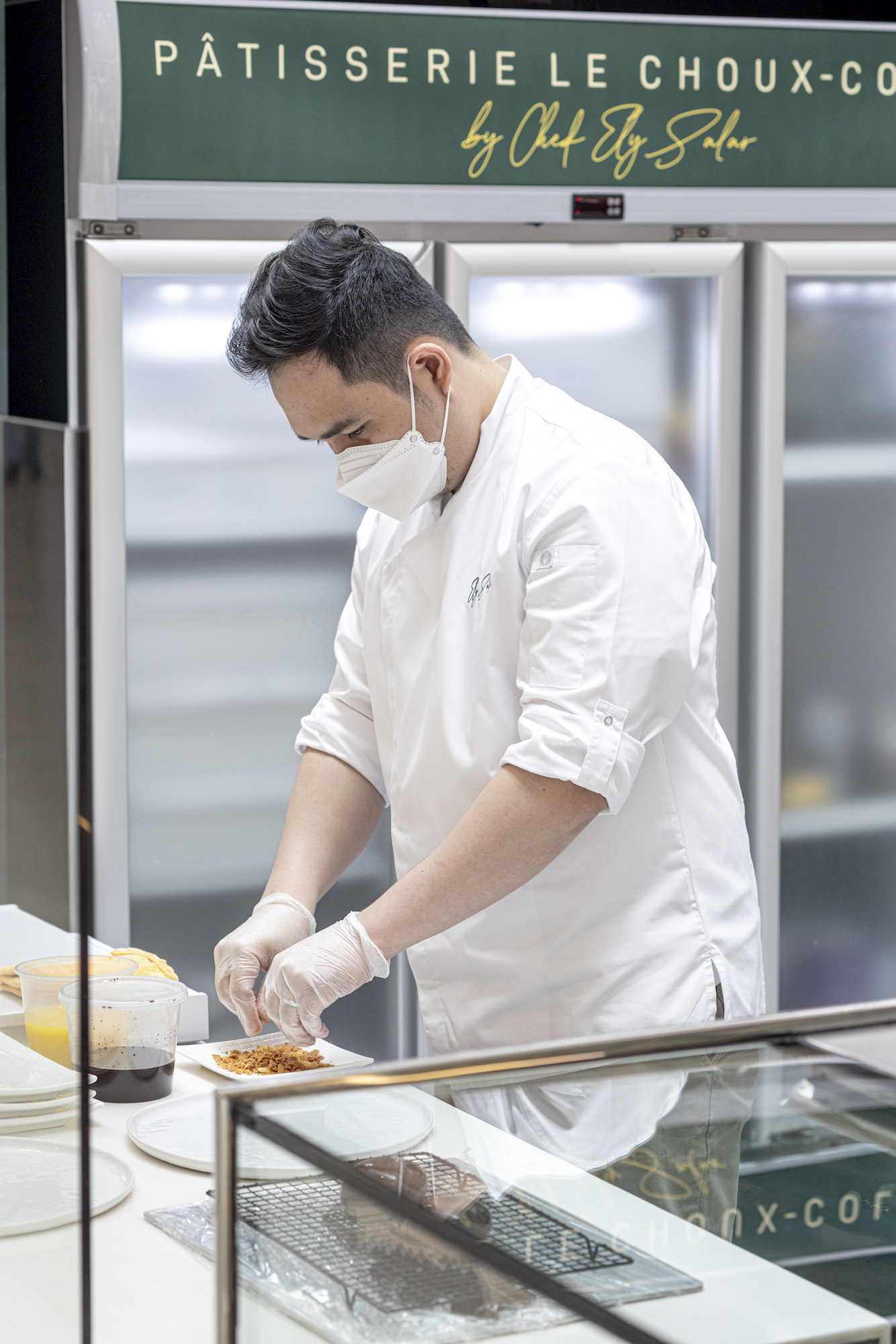Chef Ely Salar of Patisserie Le Choux-Colat generously pours a chocolate mirror glaze on mini cakes at his newly opened store at The Podium. He then crushes house-made feuilletine crunch and applies it carefully on its sides. Since opening during the pandemic, Salar now gets to face his customers and see their reactions firsthand when they try his confections.
“I’ve been in the hotel and restaurant industry for 15 years so I kind of miss this after the two to three years we were just stuck in the commissary,” says the pastry chef and chocolatier who has spent most of his career in Canada championing Filipino flavors.
Growing cacao


A year and a half ago, he and his wife Jiannina (who manages operations) launched Patisserie Le Choux-Colat as an online store. Their first product was a chocolate entremet that used cacao he grows himself in his farm in Leyte.
“We grow cacao in our farm called Elfortunella. We planted it four years ago. It takes about 18 months to three years before it bears fruit. It’s uncommon for pastry chefs to grow their own cacao, especially in Canada where cacao can’t grow,” Salar shares. This gives his chocolate creations another dimension and a control on quality and taste.

“Whenever I try local chocolate, I always look for that tablea aroma. When I was a consultant in Mindanao developing chocolate, I saw the difference. When you use a modern process of roasting cacao beans, it loses the tablea aroma. So when we did our tablea, I wanted to keep the traditional way of roasting cacao with wood fire to preserve the aroma,” Salar explains.
“Whenever I try local chocolate, I always look for that tablea aroma. When I was a consultant in Mindanao developing chocolate, I saw the difference. When you use a modern process of roasting cacao beans, it loses the tablea aroma,” Ely Salar explains.
This means a slightly longer roasting time and a whole lot more manual work as the roaster needs to continuously mix the beans to keep them from burning.
More and more of his products are using the cacao they are growing in his farm such as the new chocolate bark. “The farmers were so excited that our orders were increasing for cacao. We started only ordering about 10 kilos a week. Now we order about two to three times more than that. They’re so excited and I’m glad I get to help them in this way,” Salar says.
Marrying French and Filipino design

The 22.5-square-meter counter space features a marriage of French Art Deco and Filipino design. Salar commissioned Cal Tavera-Katigbak of The Sourcing Guru and Tricia Perdigon of Tpdes.ign to design his first store. Solihiya weaving can be found on the chairs to the roof of the store.
“The color and geometry (arch detail) were based on the color of the branding and the actual choux pastry itself,” explains Perdigon. “We were guided by the colors of their branding, which is a deep luxe green that contrasts nicely with the champagne gold accents. Art Deco elements are seen in our facade, the curve of our counters, our arches and corners,” adds Tavera-Katigbak.

Online to brick and mortar
Transitioning from an online store to a physical one takes a lot of research and good instinct. For Salar, he noticed that online sales were not as strong as when the pandemic forced many to stay home. “One thing that pushed us to do a physical store is that it’s starting to get normal. The online business slowed down a bit because everyone is starting to go out again. A lot of our customers kept asking us if we had a branch at malls. That was when we thought that maybe it’s time to start a store.”
“One thing that pushed us to do a physical store is that it’s starting to get normal. The online business slowed down a bit because everyone is starting to go out again. A lot of our customers kept asking us if we had a branch at malls. That was when we thought that maybe it’s time to start a store.”
To test the market, they joined bazaars and pop-ups to see the market’s reaction to their products without a long-term commitment. This also gave them a glimpse of the type of demographic a certain location drew. As their tablea’s price is almost triple than that of commercial chocolate, it was important to choose a location that had buying power for their products.
Equal opportunities

Although Salar started working at his family’s bakery at 13 years old, he felt like he had a hard time looking for a job in the pastry industry because he didn’t have a solid culinary background. “It was hard for me to get a job. Even here in the Philippines. When I moved to Canada it was hard because I didn’t have a diploma in pastry. I was lucky I had a friend who took me in,” he recalls.
This personal experience has opened him up to the fact that one’s lack of a formal education doesn’t necessarily mean a lack of passion. “Whenever I interview someone who wants to work with us, I say that it’s okay if they don’t have experience. I have workers who are only high school graduates or who have only finished elementary school.”
During one interview, a candidate told Salar that he only finished second year high school. “He said, ‘I hope you hire me even if I didn’t finish my studies. But one thing I can guarantee you is that I am hardworking.’ I told him that it’s okay. I believe that as long as you are interested in listening to what I have to teach you and you are passionate, you will learn.”
Now, that candidate heads his kitchen at Patisserie Le Choux-Colat.





